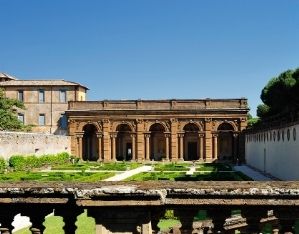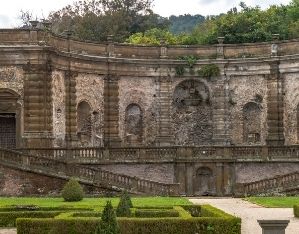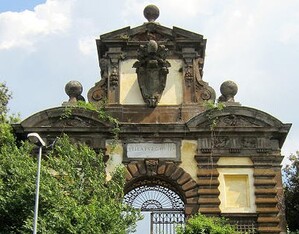Pope Paul V Borghese chose this Villa as the centrepiece of a project that was hugely ambitious in its monumentality, extension and attractiveness, designed to compete in terms of grandeur with Villa Aldobrandini, which occupied the most central and visible position in the natural amphitheatre of the Tuscolano hills.
The name Mondragone refers to the dragon on Pope Gregory XIII Boncompagni’s coat of arms, to whom the owner, Cardinal Marco Sittico Altemps, dedicated the villa. It had initially been built by Martino Longhi the Elder in the last quarter of the sixteenth century, as a sumptuous summer residence for the Pope. After he purchased it in 1613, Cardinal Scipione Borghese had the building enlarged and adapted to Baroque taste, turning it into the headquarters of what was known as the “Stato Borghesiano”. The residence was later supplemented by purchases of Villa Vecchia and Villa Taverna Borghese. The complex was the Borghese family’s summer residence: Mondragone hosted the Pope and his court, Cardinal Scipione stayed at the Villa Taverna, and their servants were billeted at Villa Vecchia. The three buildings were set in a vast park of formal gardens, tilled fields and woodland. The already-impressive Mondragone residence was enlarged to resemble a royal palace. Architect Giovanni Vasanzio added many original decor features and arrangements, including a majestic “Water Theatre” housed in an exedra with five niches, complete with scenographic and illusionistic effects. The walls were covered with espaliers of citrus plants, while the beds in the secret garden showcased fine and rare flowers, particularly bulbous plants. The building’s downhill-facing facade, especially imposing on the sloping plot, overlooked a terraced open space embellished with a fountain on a high base. The location offered fine views over the long cypress-tree-lined driveway below, and of course the surrounding countryside.




